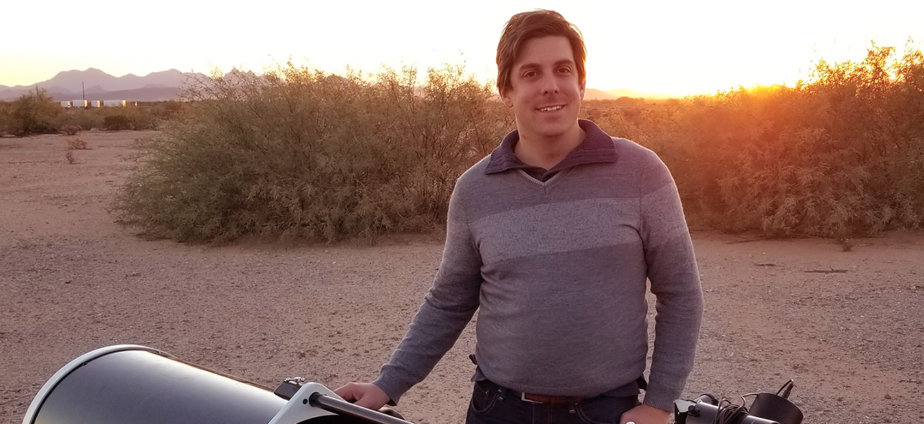A University of Southern Queensland PhD candidate has drawn on his palaeontology experience to help answer some of the big questions in Solar system science. While completing a science degree in 2005, Tim Holt embarked on several palaeontology digs in Western Queensland, where he helped uncover fossils of dinosaurs, fish and crocodiles.
Years later, this experience proved invaluable as he ventured into space research and combined these two areas in a new field called Astrocladistics. “It’s certainly been interesting merging the two branches,” Mr Holt said. “Part of the challenge was getting people to understand how the technique, often used in palaeontology, could benefit space research.”
Mr Holt’s PhD project at the University of Southern Queensland centres on the study of Jovian Trojans, a group of asteroids out near the orbit of Jupiter. These asteroids didn’t form where they are now, according to Mr Holt, but rather were captured during the chaotic beginnings of the Solar system, making them important historical remnants. He is now working to group the Trojans into clans using a technique borrowed from biology, called cladistics, an analysis method that helps categorise objects and organisms based on shared traits.
Often used in palaeontology, this is the first time the technique has been applied to large datasets in planetary sciences. “I was on my way to a training day and thought, “I wonder if cladistics could be used to prove that” and it turns out it could,” he said. “NASA is launching the Lucy Mission later this year, which will visit six Trojans over the next decade, providing invaluable information of these fossils of the early Solar system.
“This work helps to provide more context about the Trojans, increasing the value of future Lucy observations. It also highlights the importance of interdisciplinary work – we need more people from all backgrounds crossing the floor to help tell the story of the Solar system.”
Mr Holt is currently completing his University of Southern Queensland PhD remotely and is located at the Southwest Research Institute in Colorado, USA. “I get the best of both worlds here, a world-class degree from the University of Southern Queensland while continuing my research in Colorado,” Mr Holt said.
Astrophysics Professor Jonti Horner, one of the supervisors of the project, said Trojans were a vital piece of the puzzle when it came to the formation of the Solar system. “Cladistics is a very powerful technique used to help uncover links between species when data is limited,” Professor Horner said. “The information gathered by Tim will help to make NASA’s Lucy mission as effective as possible by helping to identify the most interesting targets.”
Professor Horner said the benefits of Mr Holt’s project were two-fold. “Not only do we gain important information through this research but it also highlights the significance of a multidisciplinary approach,” he said. “Each discipline develops their own tools and if the areas don’t communicate you could end up with a situation where there’s an incredible method that would be perfect for another field of study and nobody knows about it. In this case, Tim has this incredible knowledge from his background and he’s applied it to a different area of research – which has been very valuable.”
Mr Holt’s paper on the project been accepted for publication in the Monthly Notices of the Royal Astronomical Society.
Are you fascinated by the universe? The University of Southern Queensland’s Bachelor of Science Astronomical and Space Sciences major helps students develop their professional knowledge and skills in stellar astrophysics, planetary science, solar physics, space science and physics, while providing research project experience.
Readers also enjoyed our story about Super Accounting Expert









